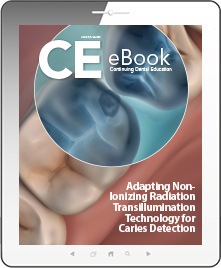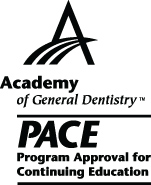CDEWorld > eBooks > Adapting Non-Ionizing Radiation Transillumination Technology for Caries Detection


ADA CERP is a service of the American Dental Association to assist dental professionals in identifying quality providers of continuing dental education. ADA CERP does not approve or endorse individual courses or instructors, nor does it imply acceptance of credit house by boards of dentistry. Concerns or complaints about a CE provider may be directed to the provider or to ADA CERP at www.ada.org/cerp/

Approved PACE Program Provider. FAGD/MAGD credit. Approval does not imply acceptance by a state or provincial board of dentistry, or AGD endorsement. 1/1/2023 to 12/31/2028. ID # 209722.
eBook
Released: Tuesday, August 22, 2017
Expires: Friday, August 21, 2020
Adapting Non-Ionizing Radiation Transillumination Technology for Caries Detection
By Jan Myskowski, RDH
Commercial Supporter: DEXIS
The integration of new imaging technologies, such as non-ionizing radiation transillumination or fluorescence, into a practice provides a safe, effective alternative to radiographic images. With new devices in-hand, dentists can adjust protocols to reflect the current recommendation that radiographic prescriptions be individualized for select patient types. The thoughtful application of caries detection options impacts the patient experience and diagnostic capabilities of the practice.
LEARNING OBJECTIVES:
- Describe the difference in NIR transillumination and fluorescence technologies and their applications.
- Recognize ADA Radiographic Protocols for select patient types and appreciate how the use of new modalities might modify these protocols.
- Review the importance of creating comprehensive imaging protocols specific to each practice's diagnostic philosophy and the importance of a team approach to the use of imaging technology.
About the Author
Jan Myskowski, RDH
Ms. Myskowski is a Temple University graduate with degrees in Dental Hygiene and Public Health. She worked in private practice and in the dental forensic field. She held corporate positions including Certified Instructor, Manager of Training, Customer Advocate, and Training and Operations Leader for KaVo Kerr. She currently serves as KaVo Kerr's Clinical Program Manager. She was selected as one of Dental Product Reports' Top 25 Women in Dentistry in 2016.


